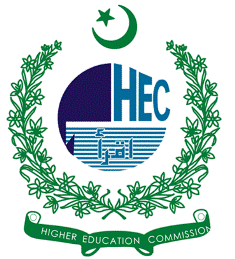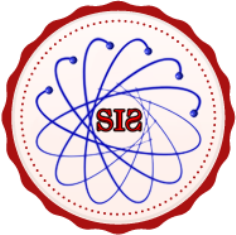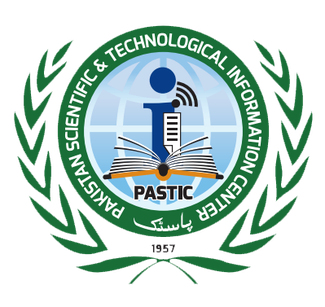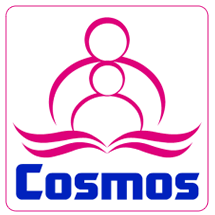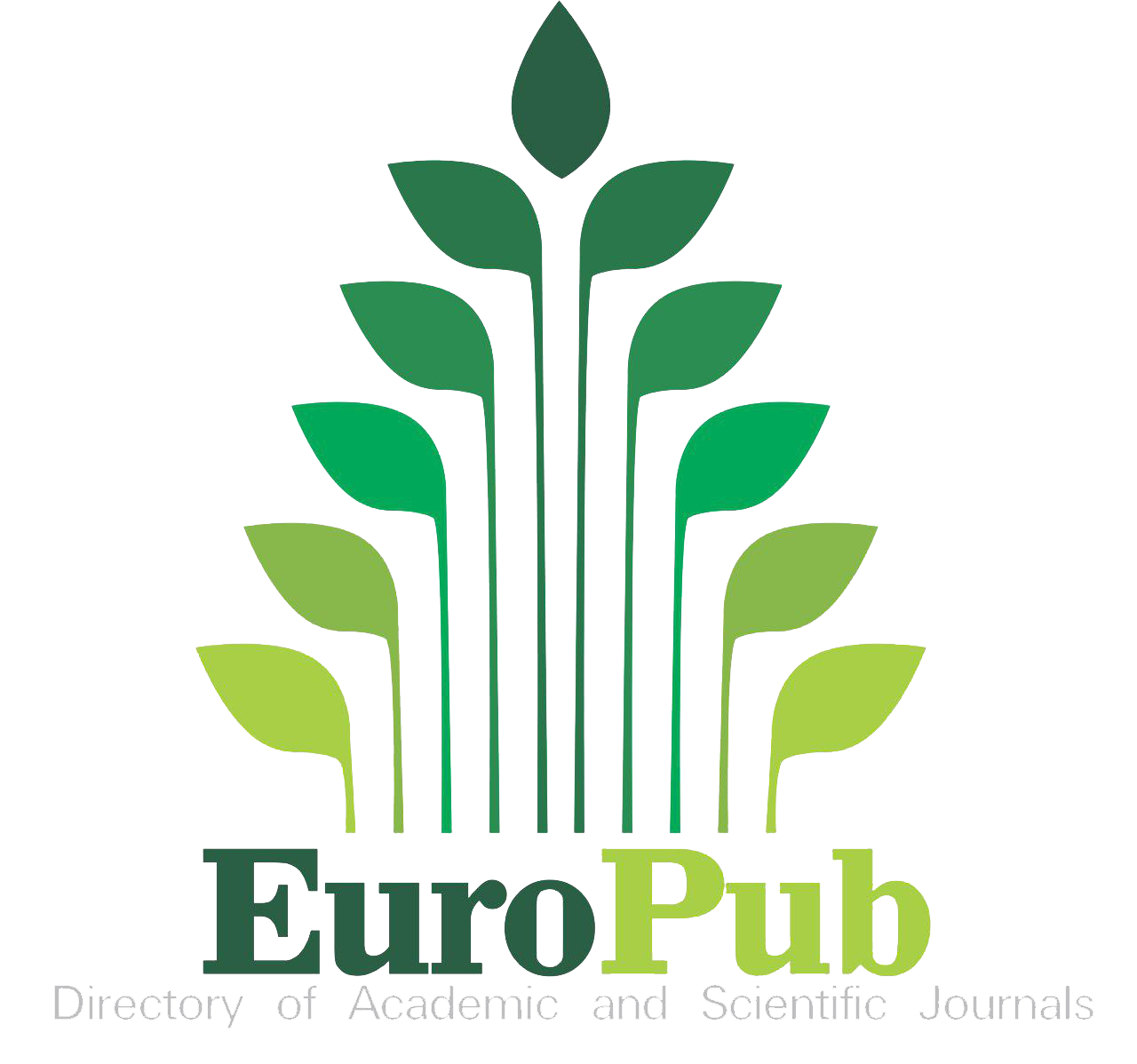Effect of Concentration Variation on Zirconium Nickel Cobalt Metal Organic Framework-Based Electrode Material
Keywords:
Zrnico Zif-67, Co-Precipitation Method, X-Ray Diffraction (XRD), Electrode Fabrication, Redox Activity, Electrochemical PerformanceAbstract
In this research, two samples of a ZrNiCo ZIF-67 with the change in molar concentration of metal to linker (1:1 and 1:2) were synthesized via the co-precipitation method. Then electrode fabrication was done. An attractive candidate for supercapacitor electrodes, ternary metal oxides ZIF 67 exhibit several desirable properties, including a large surface area, porosity, chemical stability, tailoring ability, redox activity, and low environmental impact. The porous polyhedral structure of ZrNiCo ZIF-67, which incorporates connected nanoparticles of varied compositions, greatly enhances the charge storage capacity. They are essential to a robust and sustainable energy future, and they have social, ecological, and economic significance. Electrochemical methods such as cyclic voltammetry (CV), galvanostatic charge and discharge (GCD), and electrochemical impedance spectroscopy (EIS) are among the various characterizations used to assess the electrode's performance. Other approaches include X-ray diffraction to study the crystal structure. With a specific capacitance of 232 F/g at a current density of 1 A/g, the ZrNiCo ZIF-67 (1:2) electrode material performs better than the other ZrNiCo ZIF-67 (1:1) materials. In order to create nanocomposites ZrNiCo ZIF-67 (1:2) with improved electrochemical characteristics, this research provides an easy and practical method. These materials can then be used as electrodes in supercapacitors for high specific capacitance.
References
Y. W. Shiza Malik, Khalid Muhammad, “Nanotechnology: A Revolution in Modern Industry,” Molecules, vol. 28, no. 2, p. 661, 2023, doi: https://doi.org/10.3390/molecules28020661.
H. Goesmann and C. Feldmann, “Nanoparticulate Functional Materials,” Angew. Chemie Int. Ed., vol. 49, no. 8, pp. 1362–1395, Feb. 2010, doi: 10.1002/ANIE.200903053.
I. W. Hamley, “Nanotechnology with Soft Materials,” Angew. Chemie Int. Ed., vol. 42, no. 15, pp. 1692–1712, Apr. 2003, doi: 10.1002/ANIE.200200546.
M. A. A. Abdul Ghani Olabi, Qaisar Abbas, Ahmed Al Makky, “Supercapacitors as next generation energy storage devices: Properties and applications,” Energy, vol. 248, p. 123617, 2022, [Online]. Available: https://www.sciencedirect.com/science/article/abs/pii/S0360544222005205?via%3Dihub
Y. M. Volfkovich, “Electrochemical Supercapacitors (a Review),” Russ. J. Electrochem. 2021 574, vol. 57, no. 4, pp. 311–347, May 2021, doi: 10.1134/S1023193521040108.
S. A. J. Pranoti H. Patil, Vidya V. Kulkarni, “An Overview of Recent Advancements in Conducting Polymer–Metal Oxide Nanocomposites for Supercapacitor Application,” J. Compos. Sci, vol. 6, no. 12, p. 363, 2022, doi: https://doi.org/10.3390/jcs6120363.
S. W. J. Yedluri Anil Kumar, Nipa Roy, Tholkappiyan Ramachandran, Mohamed Hussien, Md Moniruzzaman, “Shaping the future of energy: The rise of supercapacitors progress in the last five years,” J. Energy Storage, vol. 98, p. 113040, 2024, doi: https://doi.org/10.1016/j.est.2024.113040.
T. H. Noor Tahir, Muhammad Zahid, Ijaz Ahmad Bhatti, Asim Mansha, Syed Ali Raza Naqvi, “Chapter 7 - Metal oxide-based ternary nanocomposites for wastewater treatment,” Aquananotechnology, pp. 135–158, 2021, doi: https://doi.org/10.1016/B978-0-12-821141-0.00022-7.
S. Kouser, A. Hezam, M. J. N. Khadri, and S. A. Khanum, “A review on zeolite imidazole frameworks: synthesis, properties, and applications,” J. Porous Mater., vol. 29, no. 3, pp. 663–681, Jun. 2022, doi: 10.1007/S10934-021-01184-Z/METRICS.
H. L. Ke Li, Nicholas Miwornunyuie, Lei Chen, Huang Jingyu, Paulette Serwaa Amaniampong, Desmond Ato Koomson, David Ewusi-Mensah, Wencong Xue, Guang Li, “Sustainable Application of ZIF-8 for Heavy-Metal Removal in Aqueous Solutions,” Sustainability, vol. 13, no. 2, p. 984, 2021, doi: https://doi.org/10.3390/su13020984.
S. S. A. S. Muhammad Altaf Nazir, Sami Ullah, Muhammad Umar Shahid, Ismail Hossain, Tayyaba Najam, Mostafa A. Ismail, Aziz ur Rehman, Md Rezaul Karim, “Zeolitic imidazolate frameworks (ZIF-8 & ZIF-67): Synthesis and application for wastewater treatment,” Sep. Purif. Technol., vol. 356, p. 129828, 2025, doi: https://doi.org/10.1016/j.seppur.2024.129828.
R. L. & S. H. Wen-Long Xue, Pascal Kolodzeiski, Hanna Aucharova, Suresh Vasa, Athanasios Koutsianos, Roman Pallach, Jianbo Song, Louis Frentzel-Beyme, “Highly porous metal-organic framework liquids and glasses via a solvent-assisted linker exchange strategy of ZIF-8,” Nat. Commun., vol. 15, no. 4420, 2024, doi: https://doi.org/10.1038/s41467-024-48703-5.
M. M. Zahra Ebrahimi, Mohammad Rad, Vahid Safarifard, “Solvent-assisted ligand exchange as a post-synthetic surface modification approach of Zn-based (ZIF-7, ZIF-8) and Co-based (ZIF-9, ZIF-67) zeolitic frameworks for energy storage application,” J. Mol. Liq., vol. 364, p. 120018, 2022, doi: https://doi.org/10.1016/j.molliq.2022.120018.
S. Bibi, E. Pervaiz, and M. Ali, “Synthesis and applications of metal oxide derivatives of ZIF-67: a mini-review,” Chem. Pap., vol. 75, no. 6, pp. 2253–2275, Jun. 2021, doi: 10.1007/S11696-020-01473-Y/METRICS.
R. C. and Y. K. Bharti, Ashwani Kumar, Gulzar Ahmed, Meenal Gupta, Patrizia Bocchetta, Ravikant Adalati, “Theories and models of supercapacitors with recent advancements: impact and interpretations,” Nano Express, vol. 2, no. 2, 2021, doi: 10.1088/2632-959X/abf8c2.
L. Z. Zhaoying Di, Runduo Zhang, Xiaonan Guo, Hanxiao Shen, Sebastien Royer, Jingbo Jia, Ying Wei, Yaping Li, “Efficiently catalytic purification of indoor formaldehyde upon Co-N sites derived from ZIF-67 carbonization,” Fuel, vol. 380, p. 133152, 2025, doi: https://doi.org/10.1016/j.fuel.2024.133152.
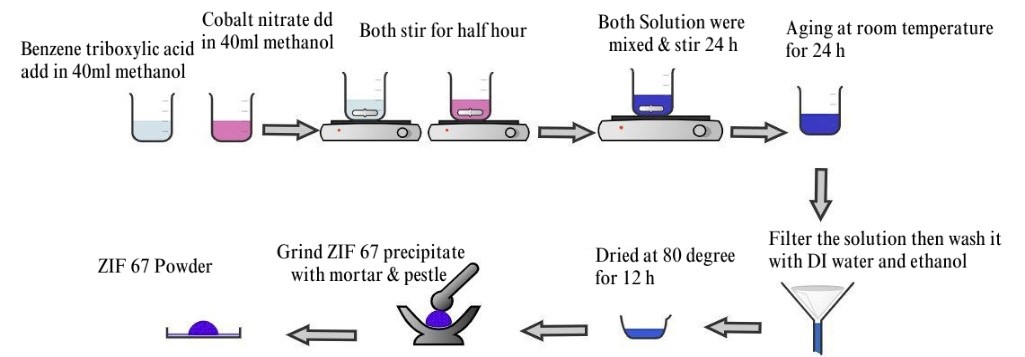
Downloads
Published
How to Cite
Issue
Section
License
Copyright (c) 2025 50sea

This work is licensed under a Creative Commons Attribution 4.0 International License.

